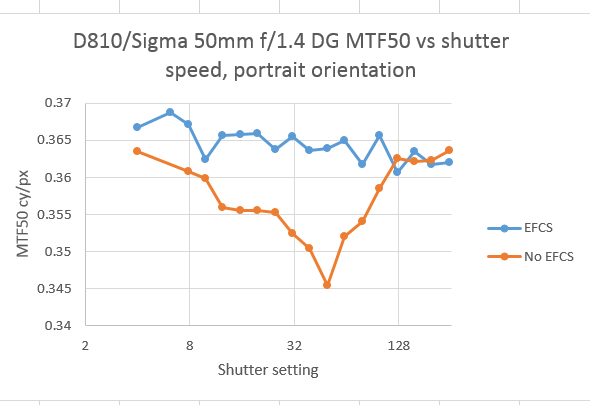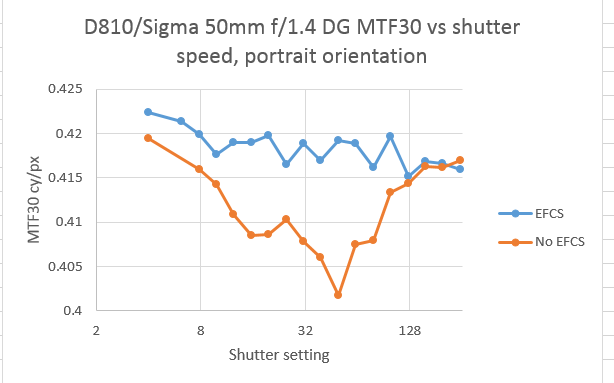[This post, like the previous one, was extensively revised on 7/28/2014, and for the same reason.]
I repeated the tests of the previous post with the camera in portrait orientation. This is a more severe test, since the shutter moves in the left/right direction when the camera is oriented with the long side up and down, and the tripod is not as stiff in that direction.
I measured the MTF of the vertical slanted edges. In the previous post, I measured the horizontal slanted edges. The reason is that the shutter vibration is orthogonal to those edges in both orientations, and therefore those edges are more sensitive to shutter vibration.
Here’s what resulted:
In portrait mode, EFCS helps quite a bit over a broad range of shutter speeds.


What’s up here? EFCS, according to the D810 manual, requires mirror-up mode, and therefore is incompatible with self-timer mode. My experience suggests the manual is right. Capture NX-D will annotate the shutter speed entry if EFCS was functioning for the exposure. (Disclaimer: this is not a recommendation of Capture NX-D.)
Is the camera entirely silent when the exposure begins?
Has Liszt hit the wrong key here? (It is supposed to have happened once or twice, bringing a faint smile to his face.)
You’re right. I discovered the error a few hours ago and re-shot. Edits coming soon.
Thanks,
Jim